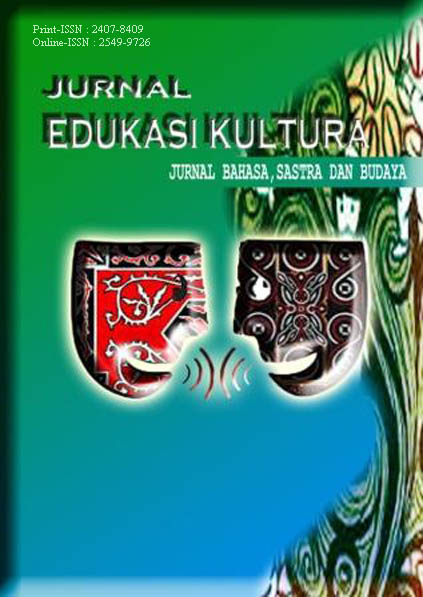Ketika Pancasila dihadapkan dengan berbagai Kesenjangan sosial: Mencari Keadilan Sosial di Tengah Ketimpangan Ekonomi
DOI:
https://doi.org/10.24114/edukasikultura.v12i1.67753Keywords:
Kesenjangan Sosial, Ketimpangan Ekonomi, Pancasila, Keadilan Sosial, Implementasi KebijakanAbstract
This article discusses the challenges of Indonesia's yawning social gap, amid increasingly complex economic inequality. Although Pancasila explicitly sets social justice as a lofty ideal, the reality on the ground shows that economic inequality is still a major challenge. This article analyzes the implementation of Pancasila values, particularly the Fifth Precept, in the context of social inequality in Indonesia, and seeks solutions to realize social justice. There is a need for intensive collaboration from the government, private sector, and society to formulate comprehensive structural reform policies. These policies include improving the quality of education, skills training, improving the distribution system of natural resources, and strengthening transparent governance. The goal is to achieve inclusive economic growth, reduce social inequality, and realize national stability. This article also discusses the importance of ensuring every citizen gets equal opportunities in various aspects as a manifestation of the Fifth Precept of Pancasila. This can be achieved through policies that focus on equal distribution and income, improving access to basic services, and creating open jobs. The author also emphasizes the importance of the strategic role of government and society in minimizing discrimination, complementing each other, reducing inequality, and ensuring sustainability.References
Dinata, M. P. (2021, April 07). DJKN.
Retrieved from https://www.djkn.kemenkeu.go.id/kp knllhokseumawe/baca- artikel/13833/Menakar-Keadilan- Sosial-di-Masa-Pandemi.html: https://www.djkn.kemenkeu.go.id/kp knl-lhokseumawe/baca- artikel/13833/Menakar-Keadilan- Sosial-di-Masa-Pandemi.html
M Dwi Nurrohim, M. S. (2024). Analisis Dinamika Ketimpangan Ekonomi terhadap Era Globalisasi di Indonesia. Journal of Regional Economics and Development, 1-7.
Nasution, A. F. (2023). METODE PENELITIAN KUALITATIF.
Bandung: Harfa Creative.
Nugraha, A. d. (2021). Pancasila sebagai Dasar Hukum dalam Mewujudkan Keadilan Sosial : Tantangan dan
Peluang. Jurnal Penelitian Hukum, 64-79.
Prodi, J. (2017). PERKEMBANGAN EKONOMI GLOBAL TERHADAP KEBIJAKAN POLITIK EKONOMI INDONESIA. JURMAFIS Jumadi.
Putri, D. F. (2023). PROBLEMATIKA KETIMPANGAN EKONOMI DALAM SISTEM EKONOMI DI INDONESIA. JURNAL ILMIAH EKONOMI DAN MANAJEMEN.
Widjaja, M. (2021). Pancasila dan Implementasi Kebijakan Publik di Indonesia. Bandung: Remaja Rosda Karya.
Yulianti, R. (2022). Pendidikan Kewarganegaraan dan Pancasila Terhadap Konflik di Indonesia. Jurnal Uns, 97-104.
Downloads
Published
How to Cite
Issue
Section
License
Copyright (c) 2025 Muhammad Iqbal, Juan Vito Simanjuntak, Maharani Br Purba, Nurdilla Ramadhani, Risky C Pratama Manullang, Tiara Niammusyfah Pasaribu

This work is licensed under a Creative Commons Attribution 4.0 International License.

This work is licensed under a Creative Commons Attribution 4.0 International License
Authors who publish with this journal agree to the following terms:
- Authors retain copyright and grant the journal right of first publication with the work simultaneously licensed under Creative Commons Attribution 4.0 International License that allows others to share the work with an acknowledgement of the work's authorship and initial publication in this journal.
- Authors are able to enter into separate, additional contractual arrangements for the non-exclusive distribution of the journal's published version of the work (e.g., post it to an institutional repository or publish it in a book), with an acknowledgement of its initial publication in this journal.Penulis.
- Authors are permitted and encouraged to post their work online (e.g., in institutional repositories or on their website) prior to and during the submission process, as it can lead to productive exchanges, as well as earlier and greater citation of published work (Refer to The Effect of Open Access).



